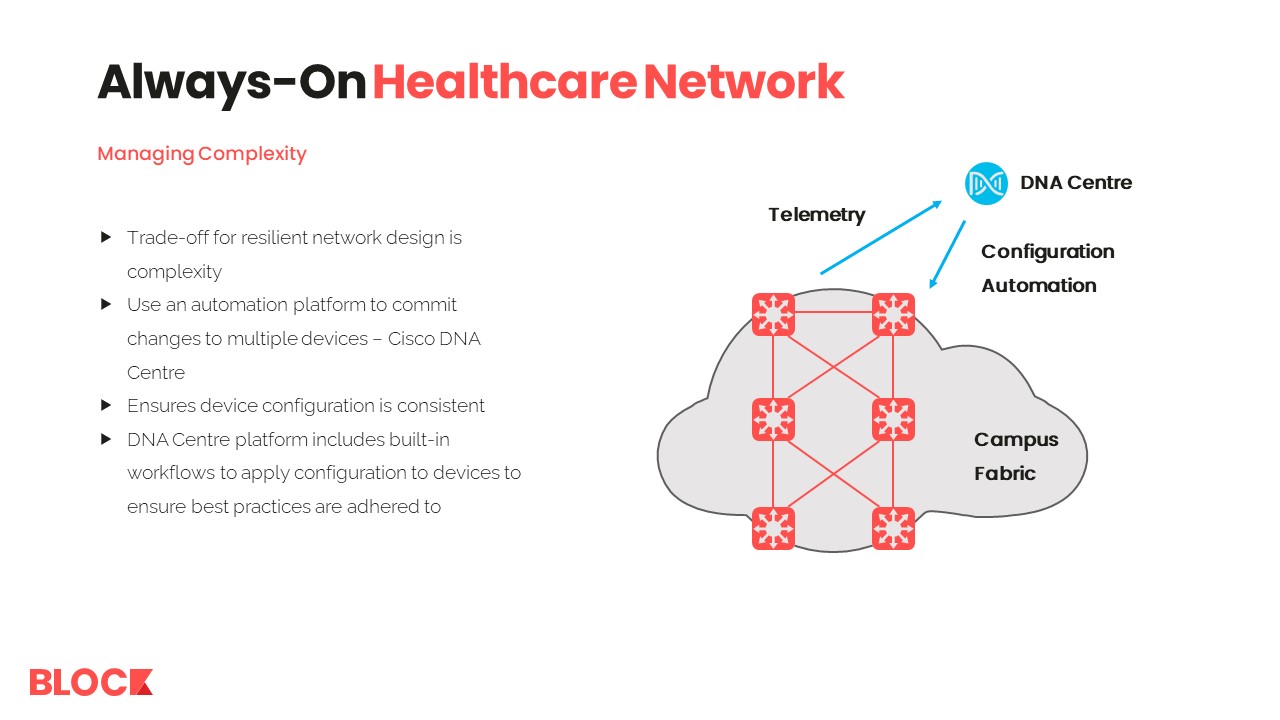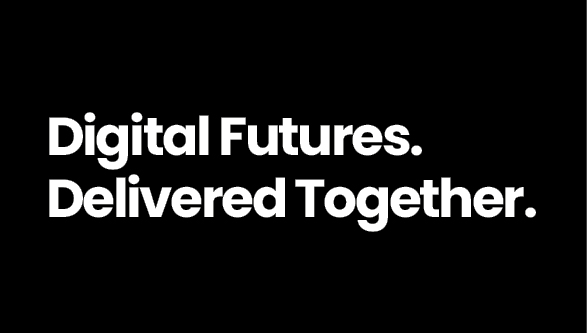Designing the Always-on Healthcare Network Write-up
This session focussed on how the concept of availability had evolved in the NHS and how today’s designs must cater for zero-disruption network operations. You can watch the full webinar here, but if you don’t have time here is a breakdown of what was covered.
Joseph Tabberer (Joe), one of Block’s CCIEs, leads the development and on-boarding of new wired and Wi-Fi technologies, using his experience across software development and network engineering to create solutions which resolve some of client’s most challenging pain points.
Matthew Mahoney (Matt), formerly CTO at a large NHS Health Board, has a wealth of hands-on experience from defining strategy and consolidating infrastructure, to opening a specialist critical care centre 6 months early during the pandemic – and the technology decisions that supported that.
Importance of Connectivity in Healthcare
It’s incredibly important to be able to keep information flowing, to provide clinicians with the data and information they need at the point of care to do their jobs safely and to make sure that we’re not causing any patient harm.
High Availability
A network designed for high availability is more reliable and tolerant of some individual failures, but we can’t expect networks to truly be ‘always-on’. 100% uptime is unrealistic as components within a network system will fail but we can aim for as close to 100% per cent uptime as possible.
Availability is measured as a percentage of time that a system is operational, typically measured in a number of nines:
- 99.99% availability = 52.56 minutes per year
- 99.999% availability = 5.26 minutes per year.
Getting into a position where downtime is measured in mere minutes is what we are truly aiming for.
Always-On Healthcare Network
There are two basic types of outages in networking; planned and unplanned. Joe explored a number of network topologies highlighting the failure points throughout, such as removing single points of failure and reducing the size of failure domains, before discussing the approach Block takes for elevated levels of resiliency.

Leveraging Wireless High Availability
Joe recommends that you leverage wireless as much as possible for endpoints to take advantage of some of the high availability features baked into wireless.
When designing a wireless network, before anything else, you need to conduct a wireless site survey, it’s absolutely critical to ensure planned outcomes are delivered. Next, consider how wireless access points are physically connected to the wired network to ensure that a failure of an access layer switch does not result in coverage holes.
ThousandEyes
Finally, Joe discusses the benefits of using Cisco ThousandEyes for monitoring applications and services where an organisation’s traffic traverses the networks that we own and operate, but also third-party networks such as telecommunications companies and Cloud service providers. Joe walks through a real-world example where a clinical application has been migrated to Microsoft Azure.
Thank you for taking the time to read this post if you would like to find out more and hear other examples of best practices, why not watch the session in full? Alternatively, if you have watched the session and still have questions, fill in our form and we’ll pass your questions on to Joe/Matthew or arrange a session with them to follow up.

